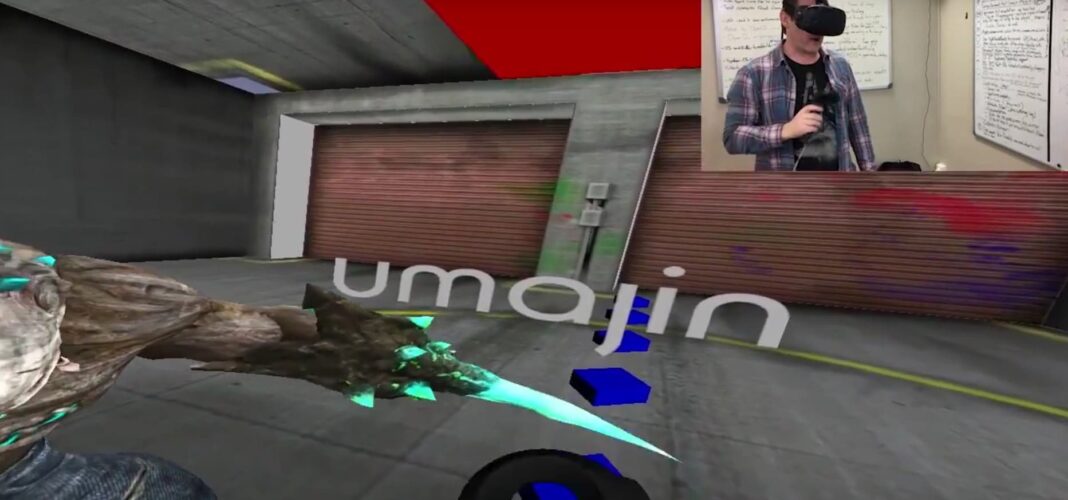Here we see the HTC Vive headset and high speed tracking used to explore a Umajin scene with two animated characters.
Because of the level of immersion an application designed to really surprise people can be more stressful that just watching a horror movie. Given you are not focusing on the surprise horror genre – it is very important for VR to manage the users physiological load.
The general goal is to make VR immersive and enjoyable not overwhelming and stressful.
The core areas are;
a) Overall stress, including clear user experience, good audio queues and managing the controller ergonomics while minimising repetitive or challenging body movements.
b) Eye strain, keeping any text large enough, good contrast for areas which can be controlled, managing the users focal plane to avoid headaches.
c) Motion sickness, avoiding fast moving camera scenarios, where possible actually provide users a fixed location to explore with head tracking. Ensuring high frame rates and low tracking latency reduces the gap between the visual system and our internal awareness of our position this is also important to stop users being able to comfortable use VR for longer sessions.
Here is a video using the Vive controller in a whole series of different interaction modes.
